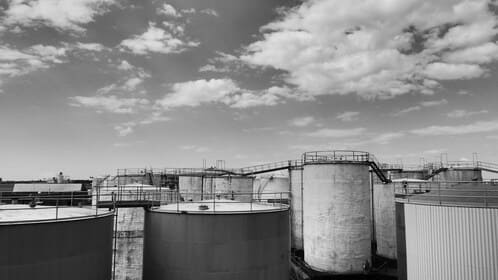Due to high demand, fiber optic sensing continues to evolve. The most well-known technology associated with fiber optic sensors is the fiber Bragg gratings. They have become an instrument for measuring thermal, mechanical and physical parameters, like other technologies.
The FBGs differ by the method of their inscription. For chirped FBGs, one of these methods is used.
What are the Chirped FBGs?
Chirped FBGs are fiber Bragg gratings with a variable period lengthwise. The most common type is the linear chirped grating, where the period of the grating varies according to a linear law. Such gratings are recorded with the help of special phase masks with a variable period. In the past decades, chirped FBGs have attracted a lot of interest from specialists. This is due to their main characteristics and grating structure.
Due to their reflective index, the chirped FBGs are different from the custom fiber Bragg gratings. The refractive index profile of a grating can be modified to add other features. One such feature is a linear change in the grating period, called chirp. The reflected wavelength changes with the grating period, broadening the reflected spectrum. A chirped grating has the property of adding dispersion. This means that different wavelengths reflected from the grating will experience different delays.
Common FBGs and chirped FBGs have another significant difference. The overall spectrum is a function of the temperature or strain that is registered in each individual section of the grating. Chirped FBG sensors are capable of detecting temperature or strain changes. In this way, they can locate the events, such as hot spots or strain deformations.
Applications of Chirped FBGs
Conventional FBGs are built on the basis of the periodic modulation of the refractive index in the core of the optical fiber. They have been proven to be the top of the line grating-based type of technology.
- Structural engineering;
- Medical devices;
- Oil and gas industry;
- Nuclear monitoring, etc.
The fiber Bragg gratings are used as in-fiber mirrors or optical filters with a narrow band optical spectrum. They are commonly applied as sensitive elements in various fiber optic sensing systems for measuring strain, temperature, and other parameters.
Chirped FBGs
Chirped FBGs, as well as traditional fiber Bragg gratings, have found a variety of applications in laser technology and distributed sensing systems. All chirped FBGs have the ability to use the full length of the grating for strain or temperature change monitoring. Chirped FBGs also have their own spectral properties and ability to detect profiles. All of these key features make them in demand, and even preferred, in a number of different areas.
Their main functions are as follows:
- Heat detection and localization;
- Measurements of strain;
- Detection and estimation of the high-pressure events;
- Location of structural damage and mechanical cracks;
- Velocity measurement.
For example, there are several different applications, including the following:
- Transmission line monitoring;
- Medical treatments;
- Aerospace and automobile industry;
- Structural health monitoring;
- Biosensing, etc.
Temperature Measurement for Cancer Care
Chirped FBG sensors are real-time temperature measurement devices. One of them is medical thermal ablation. It is based on the hyperthermia principle. This technique is widely applied in pain relief, correction of cardiac arrhythmias, interventional cancer care. Thermal ablation is a recently developed technology for the minimally invasive treatment of tumors. It has proven to be effective.
Based on the correctly selected thermal dose, medical personnel choose the most appropriate treatment method. The higher the temperature, the more human cells get affected. This is especially true when treating cancer, where high temperatures help kill tumors. Thermal ablation is a minimally invasive procedure performed through a small skin incision or needle. This helps avoid damage to healthy tissue.
Chirped FBGs have made a significant contribution to the implementation of real-time distributed monitoring systems. They have found a number of applications including structural health monitoring (SHM) where their ability to measure temperature and strain is useful.
Optromix is a fast-growing vendor of fiber Bragg grating (FBG) product line such as fiber Bragg grating sensors, for example, FBG strain sensors, FBG interrogators and multiplexers, Distributed Acoustic Sensing (DAS) systems, Distributed Temperature Sensing (DTS) systems. The company creates and supplies a broad variety of fiber optic solutions for monitoring worldwide. If you are interested in structural health monitoring systems and want to learn more, please contact us at info@optromix.com










